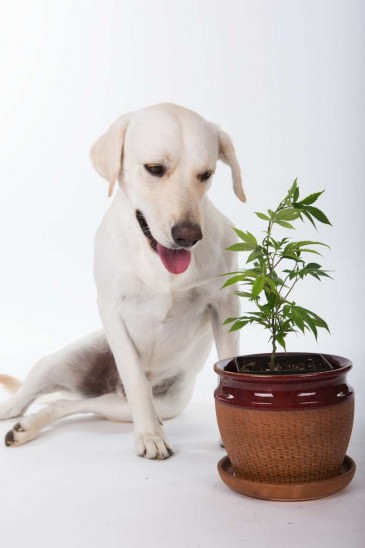
Medical Marijuana and Your Pet Just Published
Dr. Rob Silver proudly announces that his long-awaited book on the use of medical marijuana and pets is now available in three eBook formats for immediate download, or a print book hard copy with 146 pages and 36 color photographs. The ebooks are also in color. Persons wishing to download a free excerpt of the book or to purchase the downloadable eBook, or place an order for the print book to be shipped can go to this site: www.PotForPets.info.
Summary of Book:
As of the fall of 2015, 23 states and the District of Columbia allow for the medicinal use of marijuana prescribed by physicians, for human patients. Many pet owners in these states are wondering if it might also be helpful for their dogs or cats with intractable epilepsy, or cancer, or arthritis, anxiety, appetite, nausea and more. This book helps to answer those questions. It presents a balanced approach to understand how the herb cannabis works in the human and animal body, and what possible problems might arise with its use. The book very specifically advises pet owners how to avoid these problems, and still provide their pets with relief. The legalities of the use of medical marijuana in pets is discussed in this book, so pet owners can understand that no matter how much a veterinarian might want to help a patient be free from pain or suffering, because the Federal government has marijuana categorized as a Schedule One Controlled Substance, meaning that it has no recognized medical uses, it is illegal for a vet to prescribe it. They might lose their license if they did. This book does not advise pet owners who live in states where there is not medical marijuana for people to break the law and give their pets an illegal substance in their state.
Chapter Summary
This book has a chapter with recipes for extracting cannabinoids from fresh or dried cannabis or hemp plants. These extracts can then be baked into edibles if you so desire. The recipes are lower potency than those that are published for human consumption. The concern of Dr. Silver is that dogs are extremely sensitive to THC, and need to be gradually over a week’s time be introduced to THC, starting with very ultra low non-psychotropic doses. This way the recipes help to reduce some of the risks associated with getting your pet adjusted to the use for medical marijuana, if it has a condition that is responsive to this herbal therapy.
Another chapter in the book discusses the various products available at a dispensary, ranks the products in terms of their safety to pets. Yet another chapter discusses how to gradually introduce medical cannabis to your pet if you are making your own, or if you are buying at a dispensary where they measure the content of the THC and/or CBD in the product.
The last chapter of this book has some personal stories from Dr. Silver’s experiences with pets being given marijuana. He tells the story of his current pooch, Ollie who had surgery to remove his retained testicles but who wouldn’t stop licking himself, without the collar of shame on. With a little help of some coconut oil extracted cannabinoids, Ollie was able to feel more comfortable, so he would lick his wound less.
Color Photographs (36) help illustrate step by step DIY Extraction Recipes
Dr. Silver presents the recipes using simple steps, that are reflected in the color plates, but also summarized in tables of the procedure and of equipment and supplies needed. From simply using the dried herb, but grinding it to an even consistency and measuring the amount you are giving to your pet precisely, allows you to better avoid side-effects and produce positive benefits. Another recipe calls for making a tea out of the cannabis flower and leaf. Not as potent, but historically one of the ways cannabis was taken thousands of years ago.




